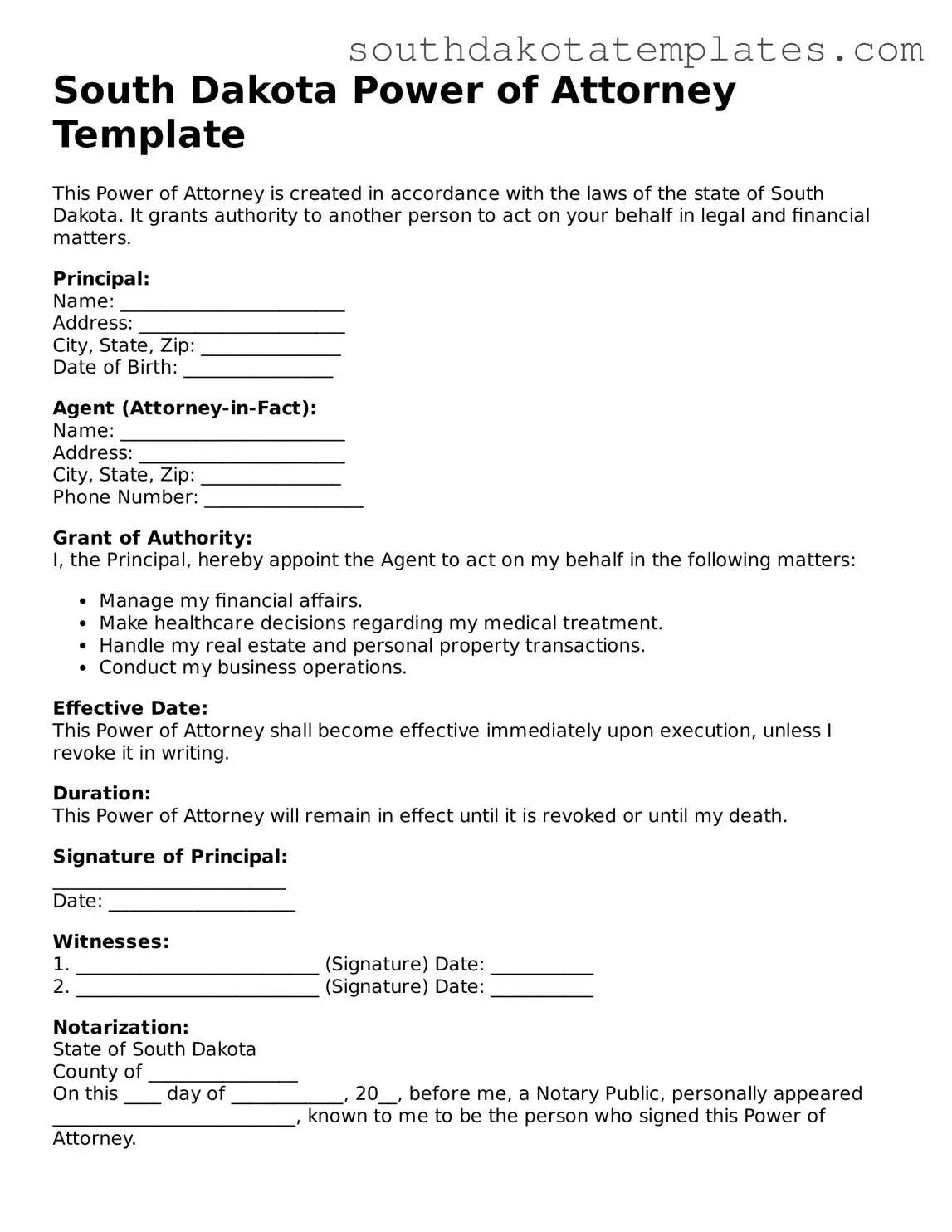In South Dakota, the Power of Attorney form is a crucial legal document that allows individuals to appoint someone else to manage their financial or healthcare decisions when they are unable to do so themselves. This form empowers a designated agent to act on behalf of the principal, ensuring that important matters are handled according to their wishes. Whether it’s managing bank accounts, signing documents, or making medical choices, the Power of Attorney can cover a wide range of responsibilities. It can be tailored to be effective immediately or only in specific situations, such as when the principal becomes incapacitated. Understanding the nuances of this form is essential for anyone looking to safeguard their interests and ensure that their affairs are in capable hands. The flexibility of the Power of Attorney also allows individuals to set clear limits on the agent’s authority, providing peace of mind in uncertain times. By taking the time to establish this document, individuals can create a safety net for themselves and their loved ones, ensuring that their preferences are honored even when they cannot express them directly.
